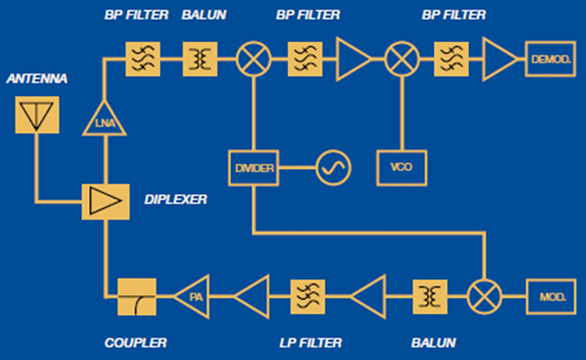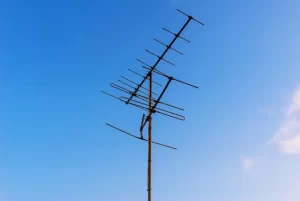Table of Contents
Frequency Band
The frequency band is the first aspect to consider when choosing an antenna, as it can determine the range of frequencies it is designed to receive or transmit. An antenna’s design is compatible with a specific frequency range, and significant performance degradation can occur if it is used for frequencies outside this band. For example, a Wi-Fi antenna is likely to operate in either the 2.4 GHz or 5 GHz bands. In this application, the appropriate frequency band depends on the requirements of the communication system installed and the data that needs to be transmitted throughput.
These needs can often be described by the characteristics of the frequency band: for instance, 2.4 GHz data travels over a larger area and is more effective at penetrating walls and other obstacles found in home Wi-Fi communication systems. On the other band, the 5 GHz band is characterized by both higher speeds and much lower effective range. For amateur radio enthusiasts, these choices can depend on the distances over which the users wish to communicate and the antenna sizes they are capable of producing. For instance, the 80-meter – or 3.5 MHz – the band provides a good balance: under the right conditions, it can provide low-frequencies that travel larger distances facilitate intercontinental communication. The effectiveness of this band has led to other antennas that facilitate similar communication, the best-known of which operates in the 160-meter band, with a frequency of 1.8 MHz.
Commercial applications of antennas depend on the characteristics of the bands as well: FM radio is typically broadcast at 87.5 to 108 MHz. In part, these design choices ensure that no other FM radios will interfere with the broadcasts, and to ensure that the station is able to reach across the desired area with its antennas and related equipment. Broadcasting stations may also use less direct reasons to choose a specific band, such as avoiding clutter. Finally, satellite communications will choose the band based on the satellites in orbit, although they will still be some of the higher frequency bands in use, such as the C band at 4 to 8 GHz or the Ku band at 12 to 18 GHz.

Gain and Directivity
When choosing an antenna, gain and directivity are the most critical factors to consider as they are directly related to the ability of the antenna to transmit and receive signals over distances and in specific directions. Gain is measured in decibels and describes how much power in a particular direction an antenna directs compared to a standard reference antenna. Directivity, in turn, describes how focused the antenna’s radiation pattern is in a certain direction. For instance, many people set up their home Wi-Fi to work at every corner of their big houses. An antenna with 9 dB of gain will reach twice as far in the given direction as a 3 dB gain antenna in a smaller house. Using a higher-gain antenna, the Wi-Fi network will work in areas that were previously dead to the signal. An instance in which directivity is instrumental is outdoor antennas used for picking up HDTV signals. In the state of Missouri, residents do not live close to HDTV broadcasting towers. Therefore, many have high-gain antennas and hook them up and aim the front of the device to the broadcasting tower. High directivity results in minimal interference from other sources and cleaner signals to the TV.
For business applications such as molded plastic parts manufactured, high gain and high directivity are both critical. The cellular antenna must cover long distances while simultaneously serving many users spaced closer together, meaning they tend to focus the signal in a specific direction. A typical cellular antenna will have a gain of about 15 dB, and it will fold the signal over a range of about 120 degrees. Lastly, radio astronomy antennas must use very high gain because the signals are weak from celestial objects, and a detailed surface is important to take these signals and possibly learn information from space objects using this data. Recipients for searching cosmic radio signals can have directivity over 50 dB. Many such antennas are used by radio astronomers all set pointing in the sky at a specific point called a phase center.
Polarization
The term” polarization of an antenna” stands for with the orientation of the electric field of the emitted or received radio waves by the antenna. The main types are linear horizontal, vertical; circular right-hand or left-hand. The polarization can only be based on the emitted signal, since the receiving antenna must also be the same. Thus, the selection of the correct polarization is one of the important points for optimization signal strength and quality. To give an example in practical terms, the television broadcast signal is broadcasted horizontally. Thus, the best way to receive it by a home TV antenna.Observing that the transmitted signal is emitted by the electromagnetic waves oscillating in the horizontal direction; if a receiving antenna is set up horizontally, the signals received will be more effective and clear.
On the other hand, in a case of the polarization of the receiving antenna is set up as a vertical direction, the desired signal to be received is eliminated and the signal decrease is measured usually over 20 dB. This can be vital for watching television, where the screen display will either be very low or consist of pixels. In satellite communication, circular polarization is preferred, as it is not affected by atmospheric conditions or the rotation of the satellite.Most satellites transmitting GPS signals use right-hand circular polarization. GPS receiver with the correct polarization completely receives the signal and has an accuracy within a few meters. Another situation where the polarization can be use Involve in the wi-fi network receiving in high crowded cities. Since the wi-fi antennas used are not changed except in terms of transmission and reception quality, the polarization of the antennas is also applied on these two bases. The best type of polarization for a wi-fi antenna is vertical, but it is also possible to use wi-fi antennas split into two to reduce interference with the other wi-fi signal. In this case, the correct type of polarization on the basis of transmission and reception is horizontal.
Size and Form Factor
Antenna size and form factor are often crucial when considering antenna placement and the space it would occupy. The two factors also have a direct impact on its characteristics such as frequency and gain. In general, the higher the frequency of the signal or wave an antenna is designed for, the smaller the antenna. On the other hand, antenna usually grow bigger as the frequency decreases. For example, a 2.4 GHz Wi-Fi receiver or transmitter for a medium-range connection often has a small, integrated antenna. It is enough to provide connectivity for a small to average size home, in which case it is still considered as a “home” use. A longer range such as those used in long-range walkie-talkies and amateur radios require a bigger antenna. For example, the 1.8 MHz amateur radio band would require a 90 meter long copper wire antenna, which would provide a proper full-wavelength antenna for efficiencies and proper gains. However, such an antenna is usually hard to get set up in most homes. In the case of amateur radio under an urban use, antennas are more manageable, often shorter, and installed approximately 40 meters above ground.
Regarding the form factor, various antennas used for transportation such airplanes or ships should be designed to be aerodynamically appropriate and suitable for the transportation anchor. For example, airplane antennas should be inconspicuous and low profile, which are often fixed on the wings or elsewhere on the airplane body. They should also stay out of the way and avoid hanging out in a way that will break or cause unnecessary drag. Ship antennas should be robust and resistant to up to hurricane winds. The antennas in question are well covered and are designed to withstand tearing by sea environment. In the case of automobile antennas, the radio and TV antennas are acceptable at the top of the vehicle, but are too big or not suitable, when one wishes to install a GPS antenna. Often called a GPS dome, the glass mount shipping and transportation GPS antennas are inconspicuous and would not interfere with the vehicle’s drag when placed on the roof. It should also have a good amount of coverage with the satellites located in the sky.







